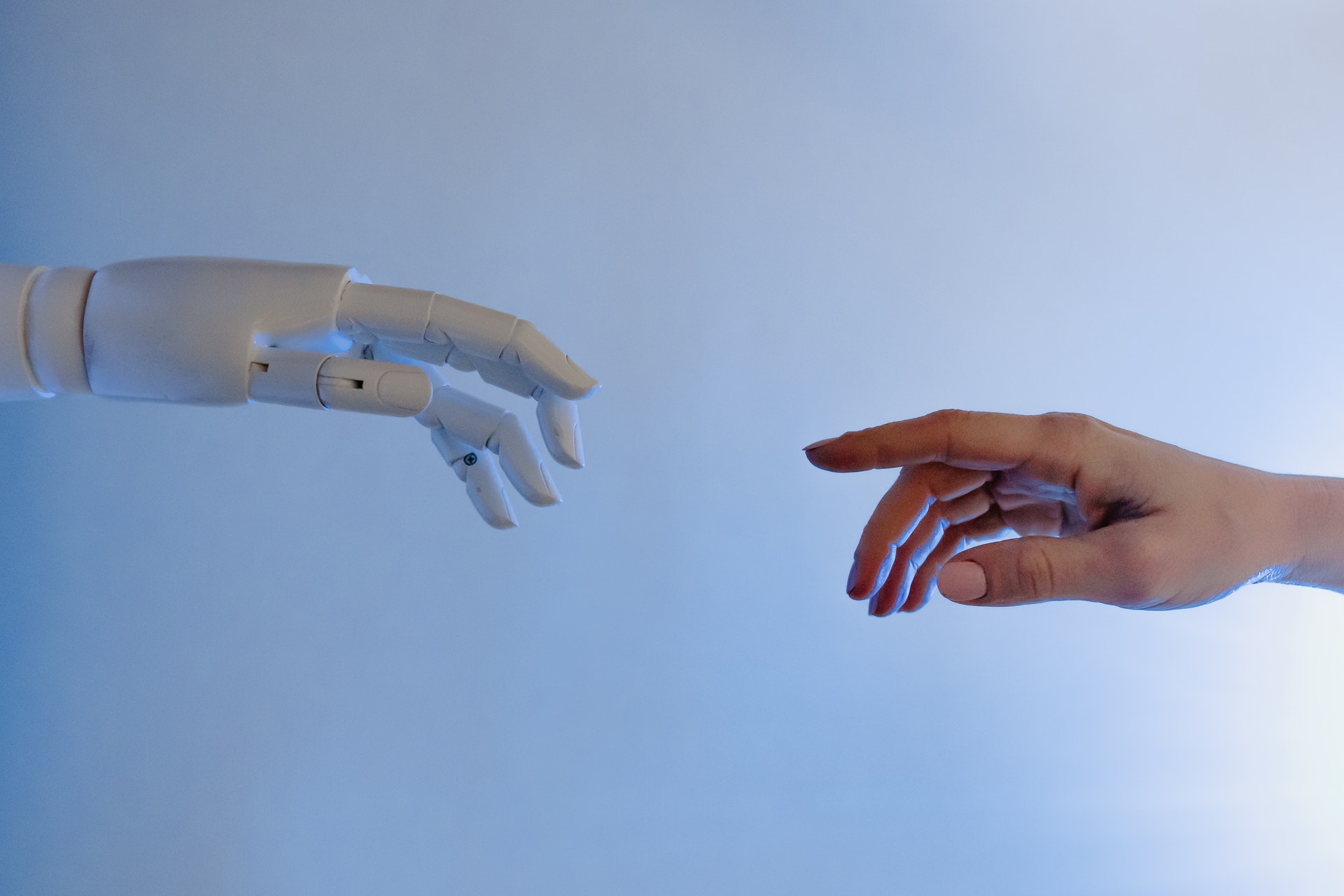Is Neurotechnology Our Ticket To The Future?

In an episode of the sci-fi series Black Mirror, Sara becomes one of the first children to participate in a trial of Arkangel – a child monitoring system installed through a cranial implant. This gives her overprotective mother Marie live access to everything Sara sees, hears, and even her medical stats and location. Additionally, Arkangel has filters that censor any disturbing visuals like blood, violence, or sex. Since Sara wasn’t exposed to violence or other unsettling content from a young age, she became frustrated and started harming herself in order to see blood. After the incident, her psychologist recommended turning off Arkangel. However, a few years later, Marie began monitoring her teenage daughter behind her back. To cut a long story short, the anecdote ends violently, leaving us contemplating the dystopian scenarios our future may hold over an empty pizza box.
So, will our future come close to this kind of dystopian reality? How close are we to becoming slaves of our own progress?
Let’s try to find answers by digging a little deeper into one of the fastest-growing technology fields.
WHAT IS NEUROTECHNOLOGY?
If the first thing that pops into your mind after mentioning neurotechnology tends to be uploading new skills into your brain as Neo does in The Matrix, you’re ahead of the game.
For now, at least.
The field of neurotechnology is relatively young with enormous potential, and even though it can drastically improve our everyday lives and well-being, it’s a controversial area with many questions that aren’t all that black-and-white.
In a nutshell, neurotechnology covers various methods and technical components that can connect directly to a nervous system. These technical components most commonly include electrodes, intelligent prosthetics, and computers. While some of these components are non-invasive and can be placed on the surface of the skin, others are inserted into the body to help alleviate symptoms of a disease or disorder.
WHAT IS NEUROTECHNOLOGY USED FOR?
-
Cognitive enhancement
From the moment technology entered medicine, we knew we wouldn’t stop at just treating illnesses and disorders – we wanted to satisfy our thirst for improvement and enhance our physical and cognitive capabilities to become better versions of ourselves.
Thus, after developing technologies like robotic prosthetics, hearing aid devices, and cardiac pacemakers, we started to think bigger. Now we want to develop technologies that allow us to read minds, learn how to play the guitar in a few minutes, and speak Chinese or Latin like it’s our mother tongue.
Today, we’re making significant leaps towards those goals. For instance, a few years ago, scientists managed to stimulate the brain and transfer memories from one animal to another. It essentially means that we’re now able to read the minds of animals. This is a huge milestone, and it opens a variety of possibilities for research and development. It’s up to us to decide in which direction we are going to develop these technologies.
If you ask Elon Musk, artificial intelligence poses a greater risk to humanity than nuclear war, and we have to be extremely cautious. On the other hand, his company Neuralink is slowly bringing sci-fi technology into our everyday lives, and it’s making major breakthroughs in connecting the human mind with computers. Brain-computer interfaces or BCIs have been used in rehabilitative and assistive technology for decades to control assistive devices like prosthetic limbs. Neuralink now has more advanced intentions that include, among others, futuristic ideas like uploading the brain and consciousness to the cloud and sending your friends your thoughts instead of texts.
Considering the potential bad outcomes, ethical codes will be needed to restrain us from overstepping the boundaries and give us the moral guidance to keep up with technological evolution.
-
Alleviating symptoms of illnesses
Since the earliest days of human civilization, people have been designing tools and assistive devices to help them alleviate symptoms and restore lost functions. From walking sticks and glasses to more sophisticated devices like cardiac pacemakers and cochlear implants, technological developments were always closely associated with improving our well-being.
One of the most successful applications of neurotechnology in relieving symptoms is reducing tremors in Parkinson’s disease patients with deep brain stimulation or DBS. Surgeons insert implants that stimulate brain areas responsible for movement and block abnormal nerve signals that cause tremors. This kind of technology won’t cure patients, but it’ll significantly improve their quality of life and slow down the progression of the disease.
Moreover, research into deep brain stimulation has made some remarkable strides in the last couple of years. In 2018 six people who were entirely or partially paralyzed regained movement and control of their limbs. In this case, neurostimulating electrodes are placed in the spine and electrical stimulation that resembles the brain activity sends signals to nerves in the limbs. Even though this kind of therapy takes years to develop and is highly dependent on the specific case, it’s a glimmer of hope for millions of people who have paralysis and similar movement disorders.
-
Treating cognitive disorders and other neurological conditions
According to statistics from 2019, more than 179 million people across Europe have been affected by brain diseases and disorders. One of the most common and fastest-growing forms of dementia is Alzheimer’s disease which slowly destroys memory and the ability to perform even the simplest tasks.
Even though deep brain stimulation has shown to be successful for alleviating symptoms of Parkinson’s disease, it’s still in its initial stages when it comes to Alzheimer’s. In a clinical trial testing the effectiveness of deep brain stimulation in reducing the symptoms of Alzheimer’s, neuroscientists embedded neural implants into brain areas responsible for memory and concentration. Promisingly, all three individuals who participated in the pilot study experienced reduced symptoms of the disease.
Similarly, scientists are using the same deep brain stimulation technology and mechanisms to implement bionic implants into the frontal lobe to mitigate symptoms of schizophrenia. Since treatments for cognitive disorders most often rely on heavy medications with serious side effects, switching to alternative ways of dealing with the disease is a priority.
-
Pain management
A recent study shows that more than 50 million Americans suffer from chronic pain. It’s affecting their everyday lives as well as the entire economy. Researchers are, therefore, intensively trying to find new ways to tackle this issue.
A recent study on implantable brain devices that could relieve pain in real-time showed impressive results on rodents. The device can detect neural patterns related to pain and immediately trigger therapeutic stimuli. Even though this could significantly reduce painkiller overuse and related side effects, there are numerous drawbacks to this kind of technology. Experts suggest that instant pain-relieving devices could lead to a Black Mirror type of scenario like the one from the beginning of this article. Let’s be honest, wouldn’t all of us avoid even the slightest notion of pain? And the more important question is, how would the complete absence of pain affect humanity and the future of our species?
-
Influencing human behavior
Technology affecting human behavior is nothing new but there’s a significant difference between too much screen time causing attention deficit disorders and neurotechnological devices changing people’s character or personality. While a considerable number of people suffering from mental disorders like schizophrenia or bipolar disorder showed reduced symptoms after having a neural device placed in their brains, there are numerous reports proving that neurotechnology can alter people’s personalities.
In some cases, behavioral changes lead to improved quality of life. For example, some people experience reduced anxiety and alleviated symptoms of depression. Some of those who used to be introverts started to enjoy engaging with people, while others noticed the shift in their preferences and choices. The famous case includes a man who developed a strong affection for Johnny Cash after deep brain stimulation even though he previously never liked country music.
On the other hand, numerous patients after the treatment experienced hypersexuality, apathy, or confusion. During a study on the psychological effects of DBS, one patient stated the following:
“You just wonder how much is you anymore. How much of it is my thought pattern? How would I deal with this if I didn’t have the stimulation system? You kind of feel artificial.”
The main issue scientists and patients have with these kinds of alterations is that they’re not controllable, and you can never know how the device or treatment will affect your character and behavior in the future. Basically, in this day and age, it’s still a gamble.
WHAT DOES THE FUTURE HOLD?
According to everyone’s favorite futurist, Elon Musk, humans will have to merge with artificial intelligence or become obsolete in the future. If we want to stay on the top of the food chain, we’ll have to create a symbiosis where humans’ unique capabilities will merge with the effectiveness of digital technology.
But where will that bring us, and what consequences will that have on our reality?
Will we soon be able to upload our brains into the cloud and preserve our thoughts forever? Will this mean that we could become immortal in a wholly digital state?
Scientists are currently working on translating human thoughts into computer-generated speech. Even though this sounds like an excellent way to help people who lost their ability to talk, another side of the medal hides a much darker possibility – what if someone could forcefully enter your brain and download your thoughts without your knowledge and use them against you?
We will have to develop cybersecurity strategies for our minds?
All these questions are maybe just theoretical presumptions, but soon enough, we can face them as valid doubts that will determine how our reality will look. It’s good to bear in mind that technology will always be a quid pro quo game – if you want to acquire something, you’ll have to give something in return. Eventually, like with everything in life, the future of neurotechnology will be determined by the strength of our appetite for advancement.
Photo by Tara Winstead from Pexels





